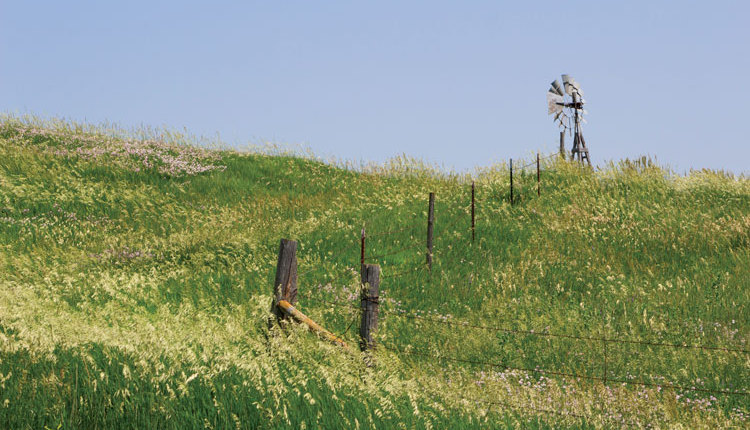
This edition of Sunrise on Soil offers some ethical and spiritual musings of soil. Although we like to focus on the technical and practical, let’s take time during these long nights to contemplate a bit more.
Soil organic matter and its microbial residents impart vital ecosystem services to which we rely on daily (see the August/September 2022 issue of Hay and Forage Grower). The living soil is teeming with faunal and microbial communities. Fauna are small organisms that move freely in soil and are typically found when we look closely at the soil surface or spade some earth, such as worms, beetles, spiders, and springtails. Microorganisms can’t move much, but are everywhere, and yet hidden from our eyes without a microscope.
On a global basis, decomposition of organic matter returns nearly as much carbon to the atmosphere as plants take from it through photosynthesis. It’s simply a natural balance, but our land management decisions can alter this balance (see the November 2023 issue of Hay and Forage Grower). A bountiful outcome is that as soil organisms consume organic compounds, they enrich the soil with mineralized nutrients and various growth-promoting compounds for the benefit of their food-producing allies — the plants. Plants provide a diversity of organic compounds that feed us directly as leafy greens, vegetables, grains, nuts, and fruits, or indirectly via ruminant livestock that feed on flourishing forages.
The activity of soil organisms is controlled largely by temperature and moisture. Frozen soil suspends activity, but baked soil exhausts these organisms. Dry soil leaves organisms thirsting and inactive, while flooded soil drowns many organisms that require oxygen just like us. Indeed, a good balance of moderate temperature and moisture is vital for a robust soil community. When it’s too cold, soil organisms just have to wait for the change of season. When it’s too hot, at least we can moderate the soil surface with robust plant growth and residual forage mass. Interaction of a diverse array of organic compounds with the milieu of microorganisms creates unique soil communities for different soil types and landscape positions on a farm.
Words of soil wisdom
Consider some land and soil quotes from a diversity of notable naturalists:
“For all things come from earth, and all things end by becoming earth.” – Xenophanes, 580 BCE
“We abuse land because we regard it as a commodity belonging to us. When we see land as a community to which we belong, we may begin to use it with love and respect.” – Aldo Leopold, A Sand County Almanac, 1949
“To every people the land is given on condition. Perceived or not, there is a Covenant, beyond the constitution, beyond sovereign guarantee, beyond the nation’s sweetest dreams of itself.” – Leonard Cohen, Book of Mercy, 1984
“Treat the Earth well; it was not given to you by your parents, it was loaned to you by your children. We do not inherit the Earth from our ancestors; we borrow it from our children.” – Unknown indigenous
“If Earth is the mother of all living things, then soil must be its womb, bearing richness beyond comprehension. Then too, carbon in soil should be considered the blood energizing the entire body, enabling the Earth to provide a multitude of ecosystem services.”
– Alan Franzluebbers, 2010
Our health in this world is tied directly to the health of the soil. Management of soil and soil organic matter is our role. Humanity depends on the orderly functioning of soil – driven by the soil organisms that inhabit it. So, let’s continue to be excellent stewards of the land, and of the soil critters that do so much for us, even while reflecting during our winter slumber!
This article appeared in the January 2024 issue of Hay & Forage Grower on page 11.
Not a subscriber? Click to get the print magazine.

